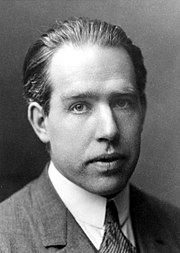Monday 27 April 2009
Cold atoms in the news
Too busy to do a proper post at the moment. In the mean-time, look at this article on the BBC website, (featuring an interview with a young atom optician).
Saturday 18 April 2009
Cold atoms probe fundamental physics
High energy physics, e.g., at CERN, promises to discover physics beyond the standard model. However, it is not necessary to expend all this energy and money to probe fundamental physics. One can do so in tabletop experiments on cold atoms, molecules and ions.
This current interest has reminded me of work by Ed Hinds to measure the electron electric dipole moment by observing the change in the energy levels of cold molecules on the application of a magnetic field. A non-zero value of such a quantity would show physics beyond the standard model. The Imperial College website has several pages of lucid explanation for the layperson here. Here is a chart from their website showing how precise they are trying to get.
Thursday 9 April 2009
The boring world of Niels Bohr

All this is to precede an addendum to my previous post about Bohr atoms: I neglected to consider interactions of Rydberg atoms with low frequency black-body radiation, which should cause stimulated transitions to nearby Rydberg states, thus decohering the quantum state; this could possibly be the principle cause of the classical type radiation.
Saturday 4 April 2009
Entanglement and free will
A colleague recently directed me to this paper (arxiv here), about entanglement and its philosophical consequences, by John Conway, of whom I was previously aware as a pure mathematician, and Simon Kochen.
The paper considers a system of two entangled spin-1 particles in separate locations, such that the total spin of the particles is zero. The authors assume that the observer (A) of one particle has free will to chose a set of axes in which to measure the squared components of the spin of the particle (i.e., he can make a choice of which axes to chose independent of his past history), and an observer of the other particle (B) has free will to measure the spin of this particle in one direction.
Furthermore, they assume the observers to be in motion such that A makes his measurement before B in A's inertial frame, but after B in B's inertial frame (temporal order is not invariant in relativity). The authors conclude that if we assume that the choices of A and B are free, then, in the same sense, the particles make a free choice (they give measurements independent of their past histories).
For more details, in addition to the original paper, see the recent notice to the AMS and this explanatory article. Also, John Conway is giving some lectures on the subject, the videos of which are being put online here.
Subscribe to:
Posts (Atom)



